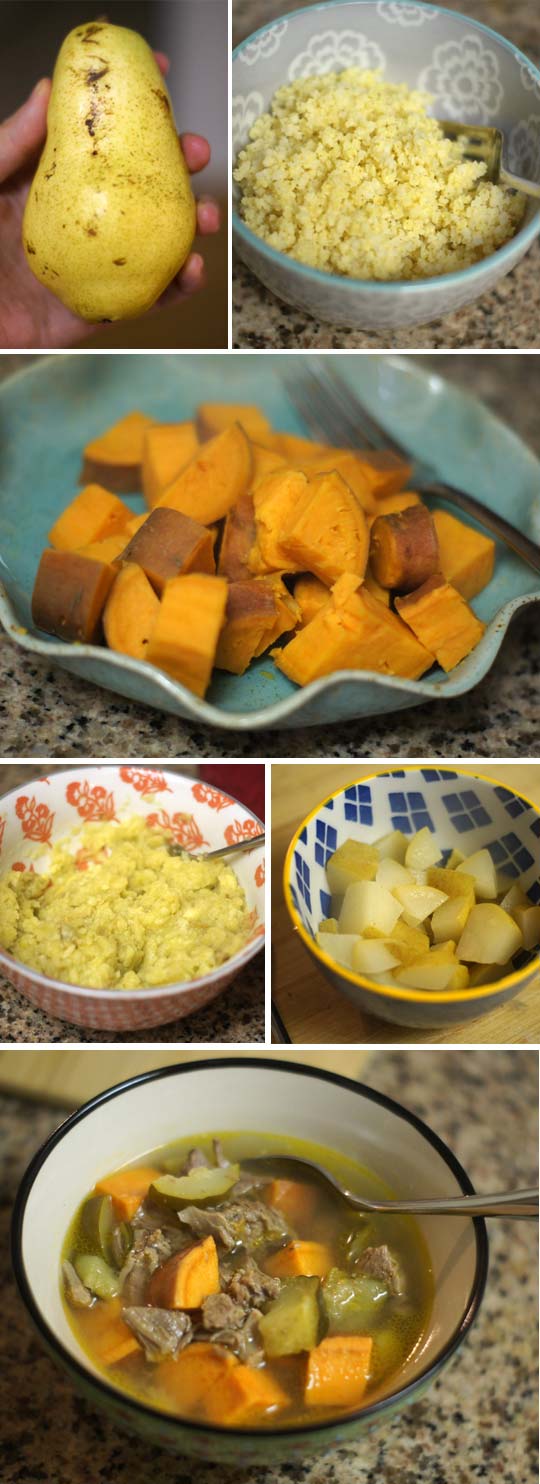Up to this point, I have been taking a gradual approach to an elimination diet, eliminating just one to two allergens each week to see if we saw any improvements with our baby’s symptoms. I mostly did it this way because I love eating a variety of foods, and I didn’t want to cut out more than I had to! However, I haven’t seen any major improvements since the very first week that I cut out wheat and dairy– even after progressively cutting out other common allergens like soy, corn, peanuts, eggs, tree nuts and chocolate. Luckily, we have really seen some positive changes since I cut out all traces of wheat and dairy in my diet. (I’m not sure if both were necessary, but we’ll deal with introducing them separately later.) Our baby is no longer vomiting or showing any signs of acid reflux, and he’s sleeping well at night. We’re up to 5-6 hour stretches! Woo-hoo! The only nagging symptom that he can’t seem to overcome is consistently producing “slimy” diapers (sorry, TMI). Our doctor isn’t concerned, because our little guy is growing perfectly and has no fever, so he’s left the decision up to me– I can continue the elimination diet to see if his diapers improve, or I can throw in the towel and wait for my baby to grow out of it, which he most likely will in the next few months, regardless. The doctor also mentioned that there’s a chance our baby isn’t intolerant to any other foods in my diet, and that his abundant drooling may actually be causing the diaper issues at this point. So, it’s anyone’s guess! Rather than continuing to eliminate one thing at a time, which could take forever, I’ve decided to dive into the elimination diet that Dr. Sear’s recommends for breastfeeding moms. It’s much more strict than I would like, but it’s probably the fastest way to deduce if anything else in my diet is affecting our baby. Plus, it’s only two weeks long. If after the next two weeks nothing changes, we’ll be more certain that nothing else in my diet is irritating him! You can read more about Dr. Sear’s elimination diet here, but the basic idea is that you eat the most hypoallergenic foods from each food group. These foods include:
Range-fed turkey or lamb Baked or boiled white or sweet potatoes Rice or Millet Cooked green and yellow squash Pears or fresh pear juice
Yep, that’s it. I can add salt and pepper to my meals, but no other oils or seasonings are included until I’m ready to start adding foods back into my diet. After the initial two weeks, or sooner if we see improvement, I’ll add back one food every four days to find out which foods might negatively affect our little guy. This way we’ll find out if a random food, like bananas or mushrooms, might be upsetting his digestion! It’s not fun, but I figure it’s the most conclusive way to figure this stuff out– and as quickly as possible, too. — So, here’s what my meals have been looking like these days:
Most of my meals these days are pretty sporadic– I just choose whichever food sounds most appealing at the moment, and eat until I am satisfied. This might mean a couple fresh pears for breakfast, followed by a steamed sweet potato as a late-morning snack, and a bowl of plain millet after that. At first, I tried to keep my meals properly combined, making a “soup” out of lamb steaks (cooked with the bone-in for a nutrient-rich bone broth) and zucchini squash, but the lamb is really unappealing to my palate. So, I’ve been adding sweet potatoes to my soup to make it easier to enjoy. I’ve been having several bowls of this soup throughout the day, since it’s my only source of dietary fat until I can start including more foods back into my diet! Oh, the things we will do for our children. — Reader Feedback: What are YOU eating this week? (I’m going to be jealous!)
